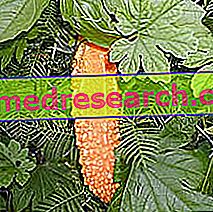Related articles: Back pain
Definition
Back pain is a very common symptom. In most cases, it occurs as a short-lived episodic pain, a few days or weeks, that resolves spontaneously or with a modest therapeutic intervention.
Back pain is usually described as a dull and continuous pain in the lumbar spine that can, in some cases, radiate to the buttocks. Patients who suffer from it generally do not report a marked local tenderness in well-defined points, except in the case of a vertebral fracture.
Acute back pain
Most acute episodes of low back pain are caused by stress, trauma and altered postures, which cause tension, strains and stiffness of the structures connected to the spine.
Stress back pain arises abruptly: the subject complains of violent bar pain and complete functional impotence. Moreover, there is a marked contracture and an intense tenderness to the pressure of the lumbar paravertebral muscles.
Posture back pain manifests itself after having maintained a certain obliged position for a long time (computer work, prolonged driving, etc.).
The pain in the spine can be due to excessive muscle tension fueled by mechanical and psychological stress, poor tone of the abdominal, dorsal and lumbar muscles or overweight.
Relapsing back pain
Pain that radiates along the leg (sciatica) may suggest a nerve compression, which can be caused by a herniated disc in a young patient, or by the formation of osteophytes in later life.
If back pain is related to a herniated disc, the pain often worsens when the patient is sitting or staying upright for long periods of time. If disc disease is compressing a nerve root, coughing and sneezing can also aggravate this symptom. On the contrary, the supine position relieves pain.
Rest relieves the symptoms of back pain, at least in the short term, especially if you suffer from a herniated disc and stenosis of the spinal canal due to osteoarthritis. In these patients, symptoms are minimal on waking and worsen with movement. On the contrary, subjects suffering from an inflammatory spondyloarthropathy (eg ankylosing spondylitis, psoriatic arthritis or arthritis related to a chronic inflammatory bowel disease) notice a greater rigidity and a worsening of symptoms following periods of prolonged rest.
Back pain due to osteoporosis, on the other hand, is characterized by intense pain, following mechanical stresses in the lumbar spine (bending forward, torsion of the trunk, etc.), which originates from micro-fractures of the bone trabeculae.
Pain and dysesthesia in the perineal region may be due to a cauda equina syndrome. Back pain can also be caused by an anatomical anomaly, as in the case of spondylolisthesis, scoliosis or other asymmetries of the spine.
Spondylolisthesis can cause, in particular, acute pain with an abrupt onset, as the ligaments and nerves are stretched. Scoliosis causes back pain even at a young age; the most frequently affected areas are the dorsal and lumbar areas.
In some cases, back pain depends on tumors, systemic infections or persistent neurological deficits.
Possible Causes * of Back Pain
- Achondroplasia
- Hallux valgus
- Amyloidosis
- Hemolytic Anemia
- Autoimmune Hemolytic Anemia
- Juvenile Idiopathic Arthritis
- Psoriatic arthritis
- Reactive arthritis
- Rheumatoid arthritis
- Arthrosis
- Cervical osteoarthritis
- Brucellosis
- Bladder cancer
- Cistopielite
- coccydynia
- Strike of the Witch
- Cervical whiplash
- Hemorrhagic corpus luteum
- Dengue
- sickle cell
- Paroxysmal Nocturnal Hemoglobinuria
- Endometriosis
- Slipped disc
- Lassa fever
- Crimean-Congo haemorrhagic fever
- Yellow fever
- Progressive Oxygenating Fibrodysplasia
- Pregnancy
- Genital herpes
- hydronephrosis
- Kidney failure
- Venereal lymphogranuloma
- Malaria
- Lyme disease
- Pelvic inflammatory disease
- Myasthenia gravis
- Multiple myeloma
- myelopathy
- Paget's disease
- Scheuermann's disease
- Obesity
- Osteitis
- osteochondrosis
- Osteoid osteoma
- Osteomyelitis
- Osteoporosis
- Hollow foot
- Flatfoot
- Rheumatic polymyalgia
- Polio
- Porphyria
- radiculopathy
- sacroiliitis
- Tuberous sclerosis
- Spherocytosis
- Decompression syndrome
- Cauda Equina syndrome
- Ehlers-Danlos syndrome
- Marfan syndrome
- Reiter syndrome
- Fibromyalgia syndrome
- Syringomyelia
- Ankylosing spondylitis
- spondylolisthesis
- Cervical spondylosis
- Cervical stenosis
- Lumbar Stenosis
- Spinal stenosis
- Adjoining twist
- Kidney tumor
- Spinal cord tumors
- Smallpox



